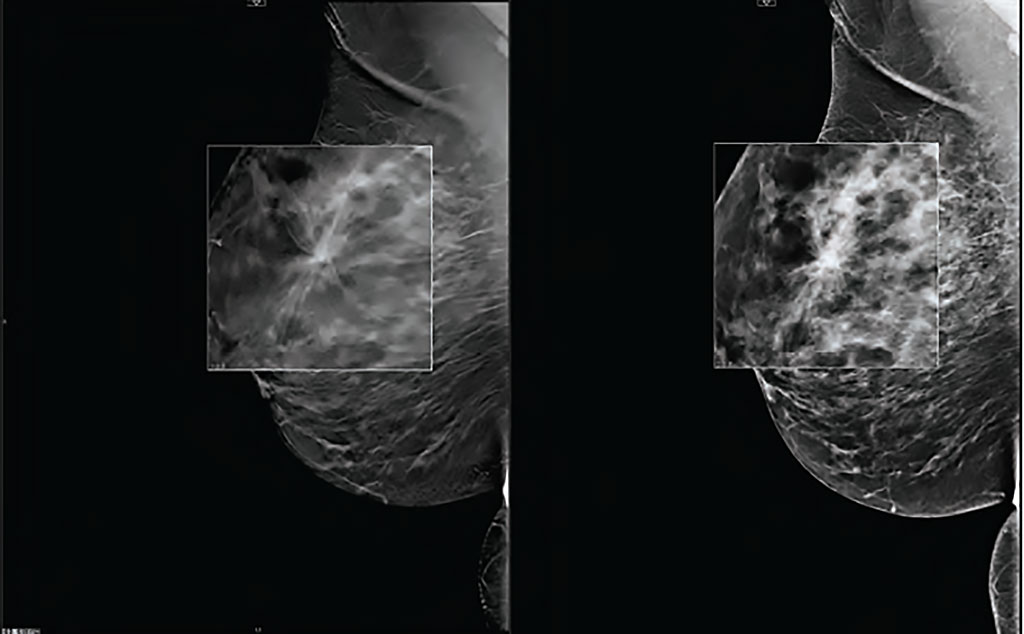DBT Increases Cancer Detection Rates and Reduces Recalls
By MedImaging International staff writers
Posted on 03 Mar 2020
A new study finds that digital breast tomosynthesis (DBT) finds more than twice as many breast cancers as digital mammography alone, or a combination of the two technologies.Posted on 03 Mar 2020
Researchers at Harvard Medical School (HMS; Boston, MA, USA) and Brigham and Women's Hospital (BWH; Boston, AM, USA) conducted a study that compared the diagnostic performance of breast cancer screening via full-field digital mammography (FFDM), a hybrid FFDM and DBT environment, and DBT only. A total of 179,028 screening mammograms were conducted, comprised of 41,818 (23.3%) FFDM, 83,125 (46.4%) hybrid scans, and 54,084 (30.2%) scans by DBT alone.

Image: DBT can increase breast cancer detection rates (Photo courtesy of Carestream)
The researchers then used the electronic health record (EHR) data to extract report records and patient demographics, a natural language processing algorithm to extract BI-RADS score from each report, and an institutional cancer registry to identify cancer diagnoses. The results showed that cancer detection rates were 2.6 per 1,000 examinations for FFDM, 4.9 per 1,000 for hybrid scanning, and 6.0 per 1,000 for DBT alone. Recall rates were 10.4% for the FFDM, 10.6% for the hybrid scans, and 10.8% for the DBT alone scans. The study was published on February 14, 2020, in the Journal of the American College of Radiology.
“Compared with FFDM, DBT improves breast cancer detection in screening mammography, which more than doubled,” concluded lead author Laila Cochon, MD, of Brigham and Women's Hospital and HMS, and colleagues. “Although overall recall rate did not change with DBT when compared with FFDM, even over time, an improvement in the positive predictive value for number of cancers per number of recalls reflects a reduction in unnecessary recalls."
DBT acquires multiple images over a limited angular range to produce a set of reconstructed images, which can then be viewed individually or sequentially in a cine loop, and in a 3D image of the breast, which can viewed in narrow slices, similar to CT scans. While in conventional 2D mammography overlapping tissues can mask suspicious areas, 3D images eliminate the overlap, making abnormalities easier to recognize. It is estimated that 3D DBT will replace conventional mammography within ten years.
Related Links:
Harvard Medical School
Brigham and Women's Hospital














